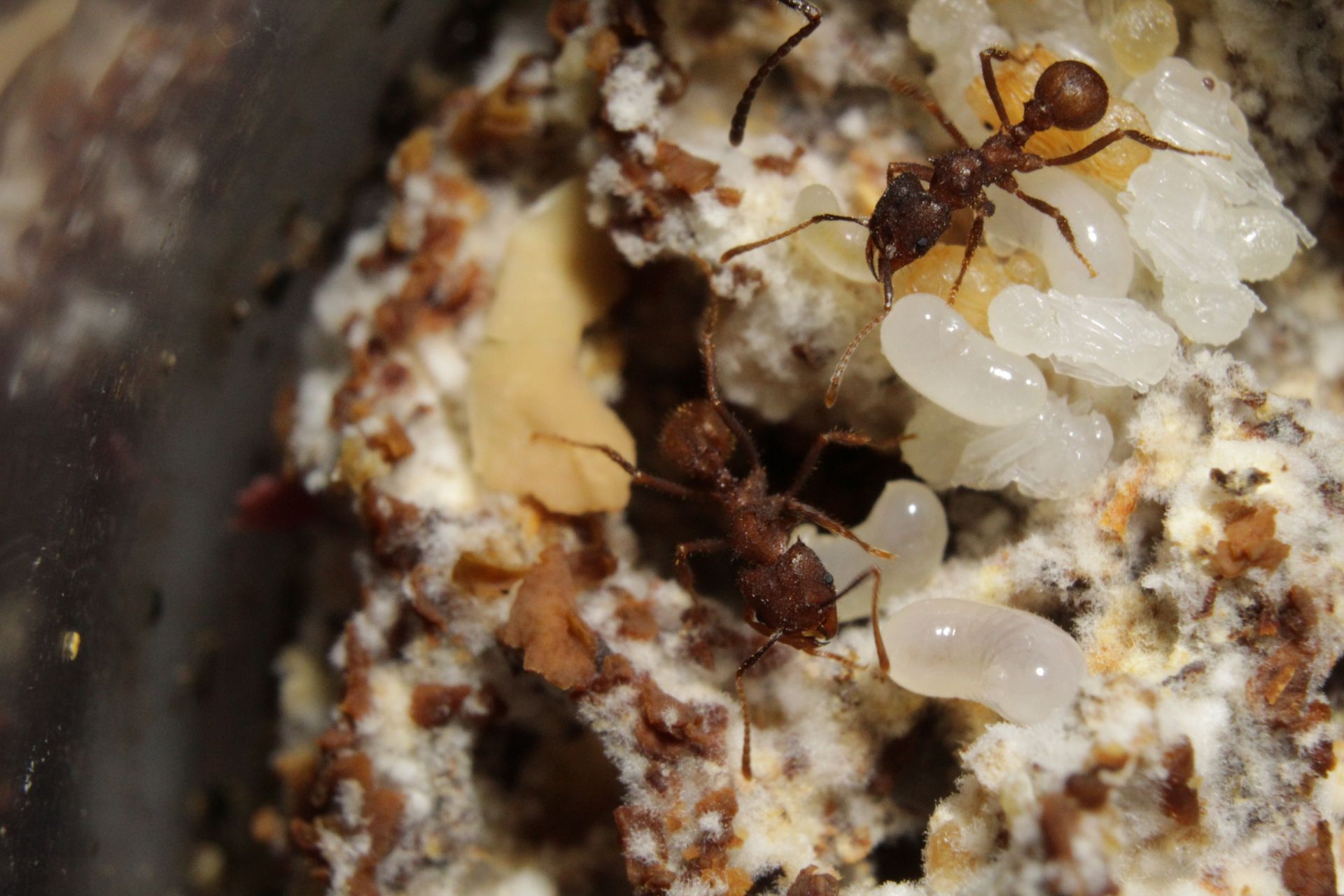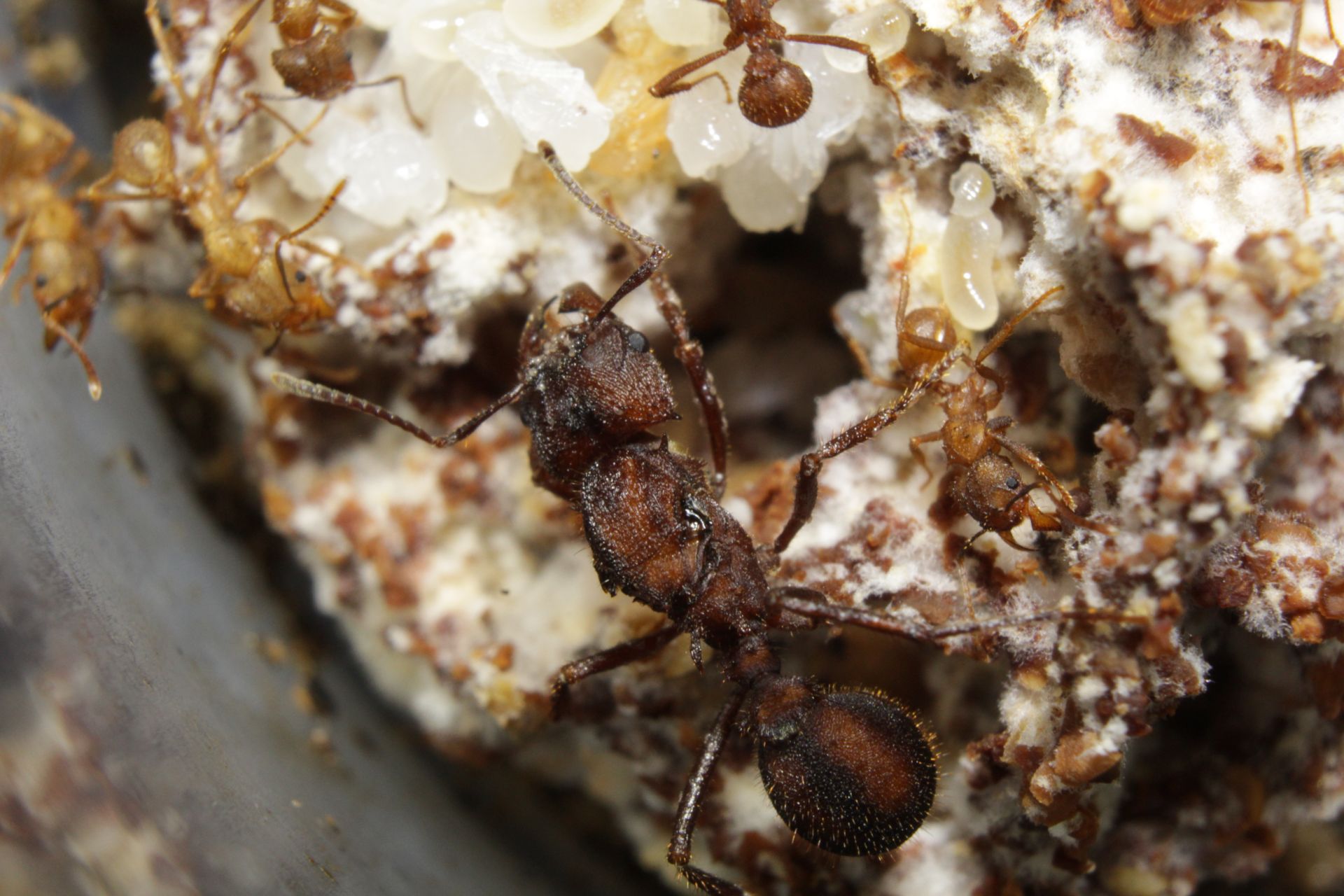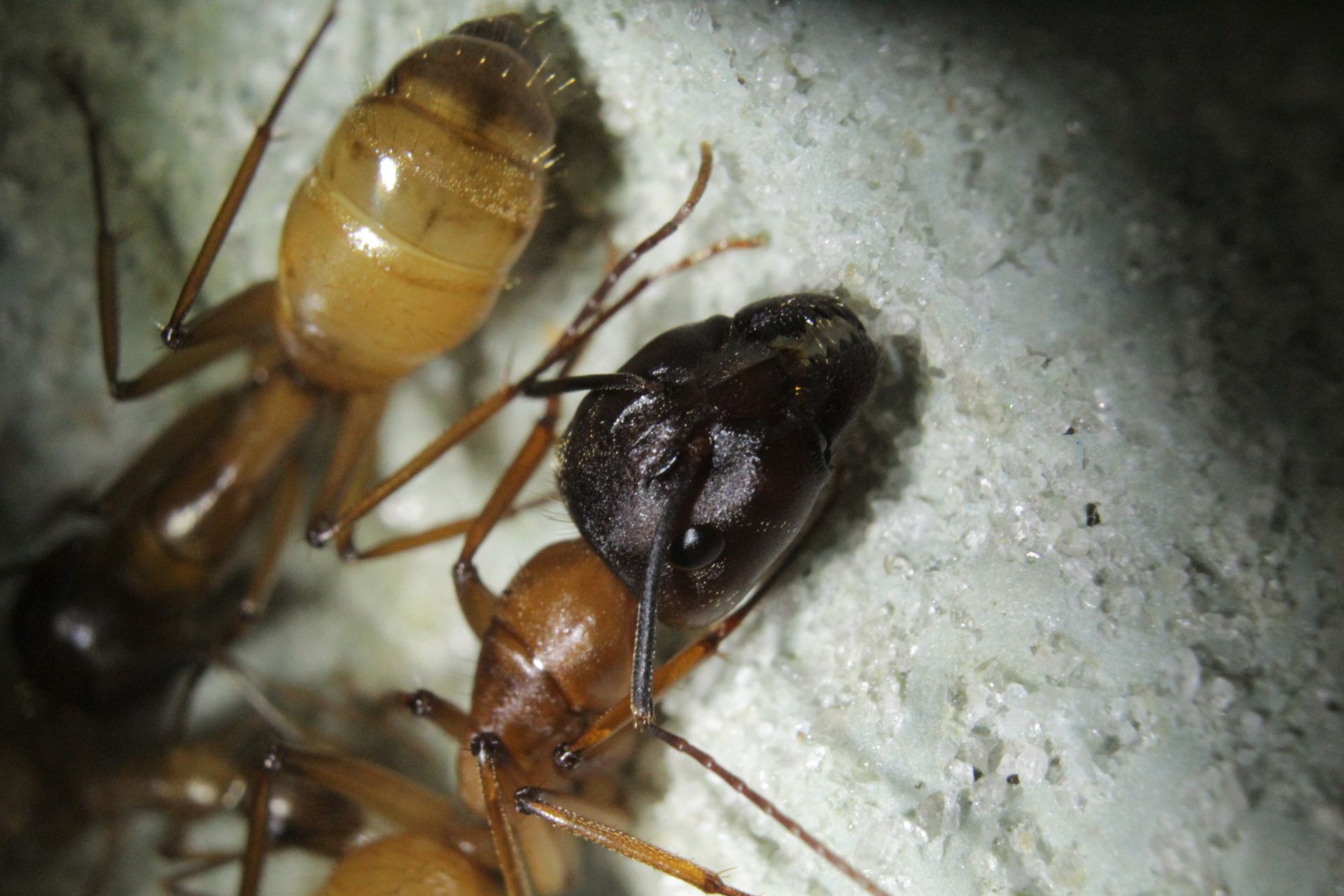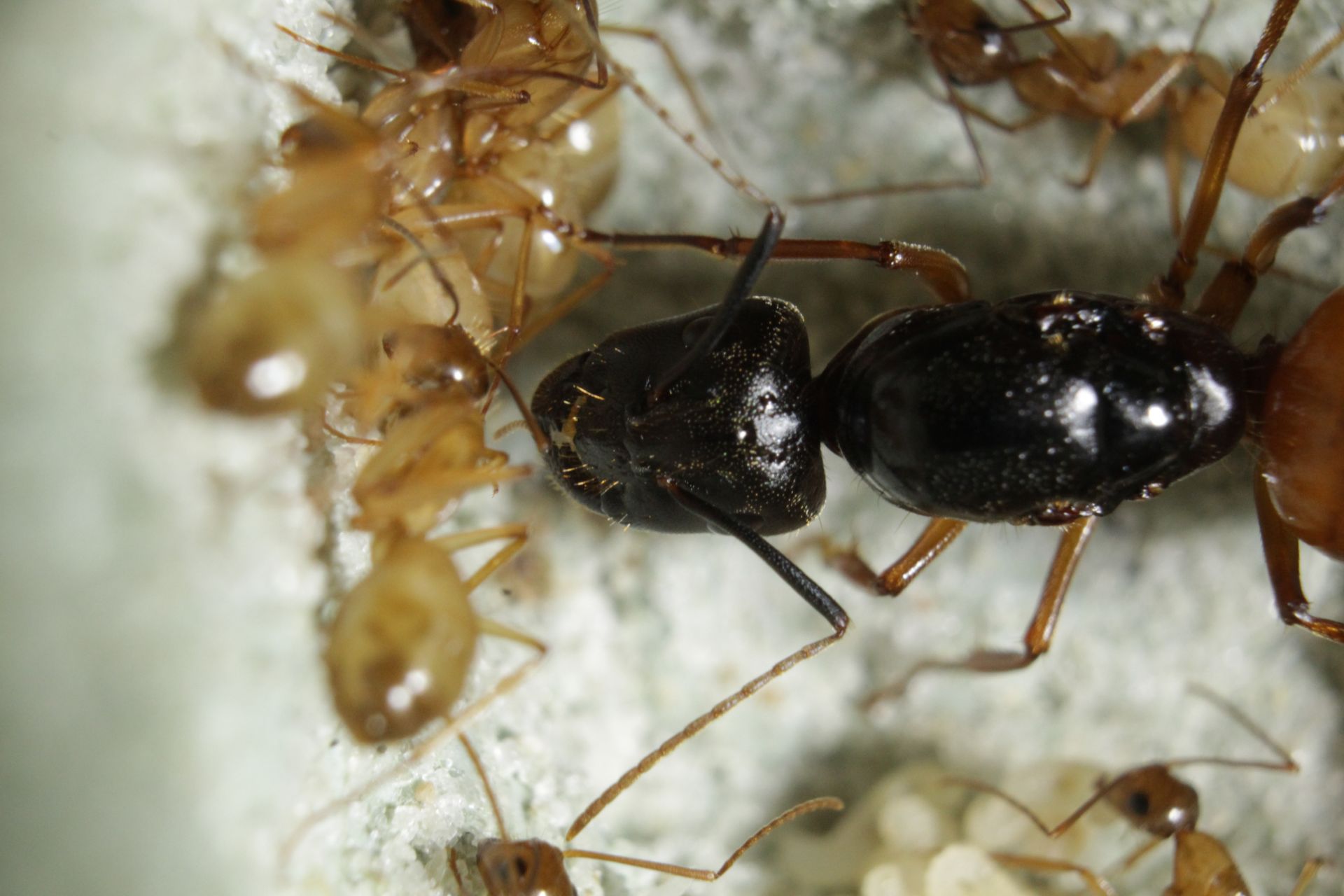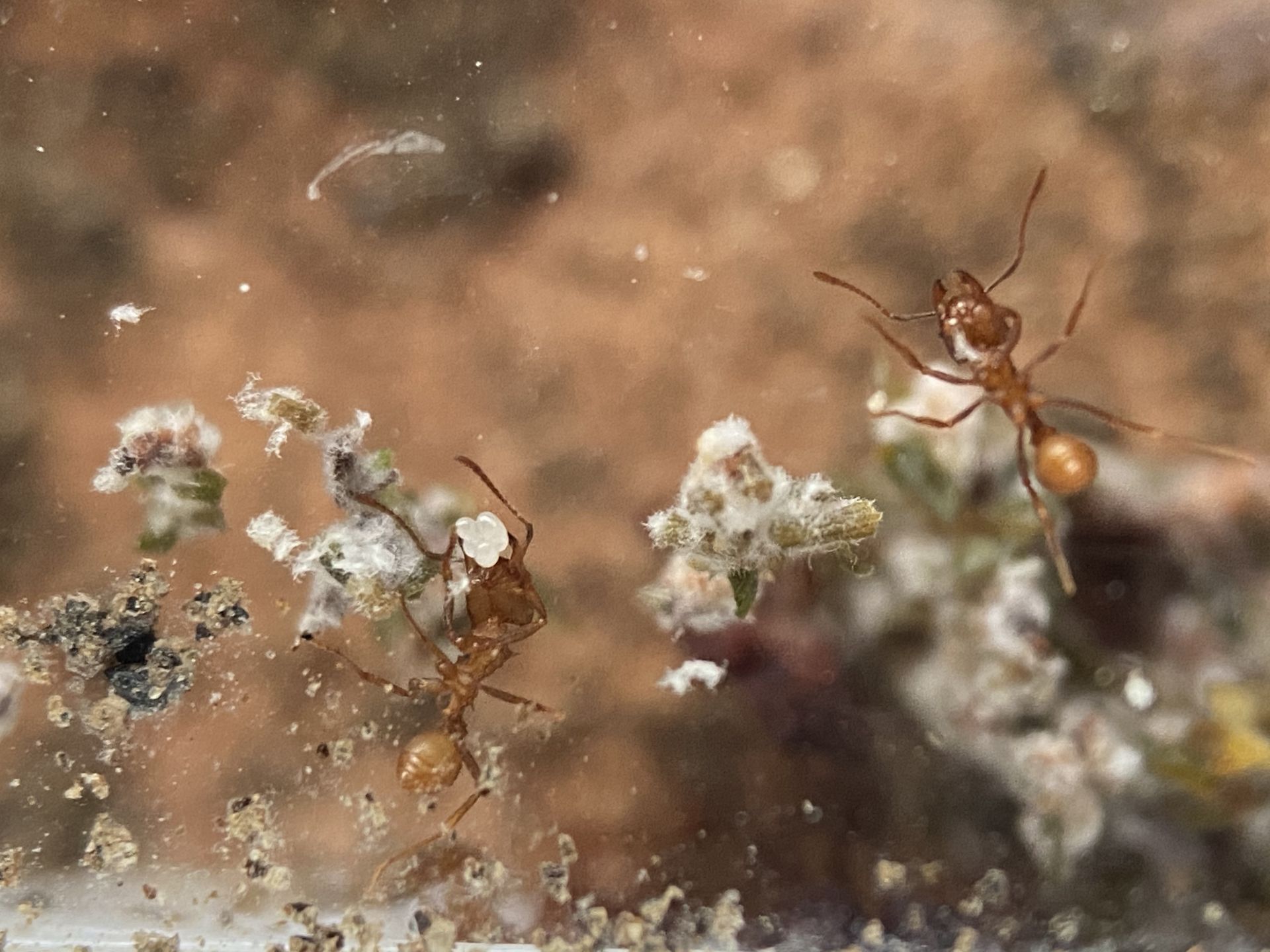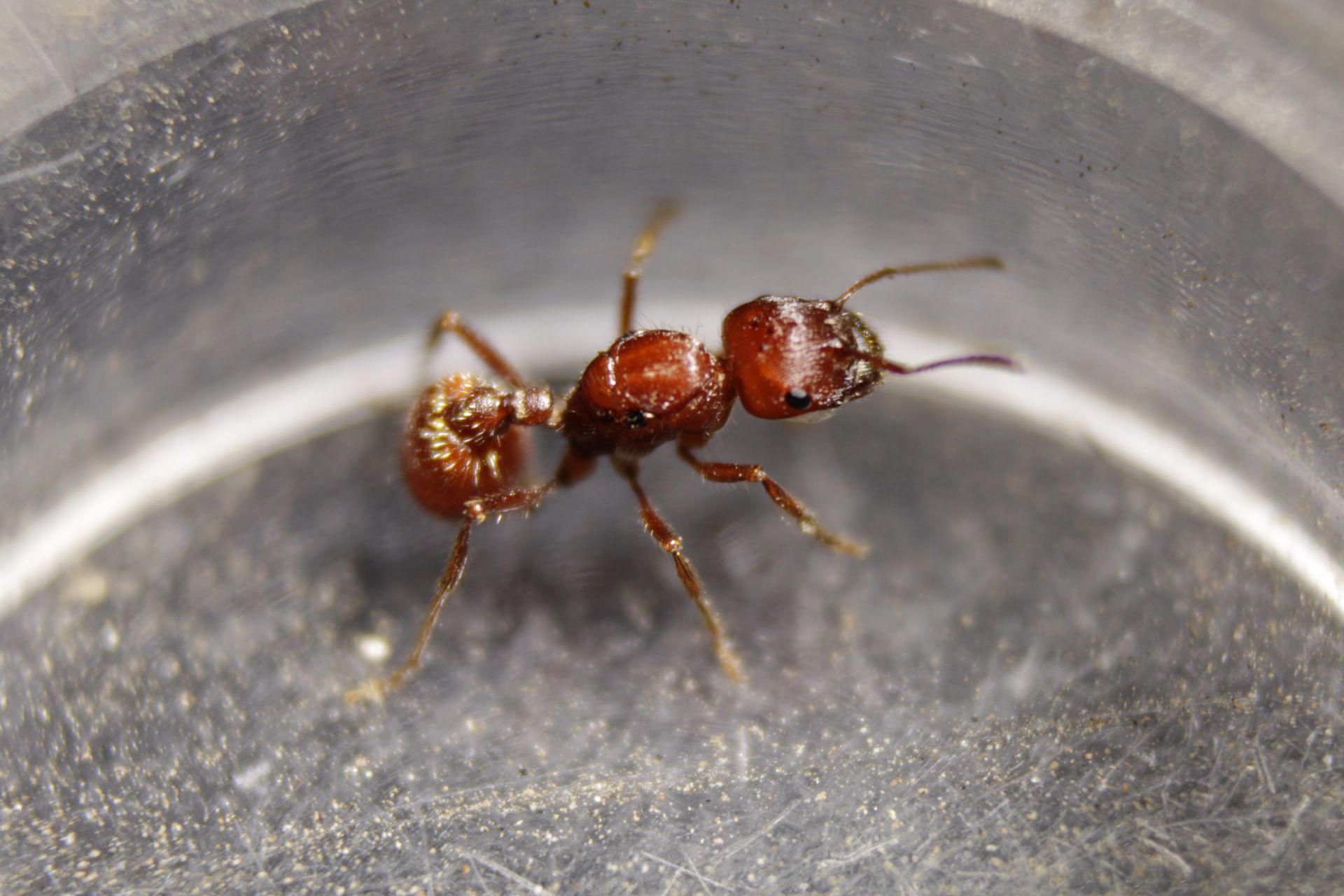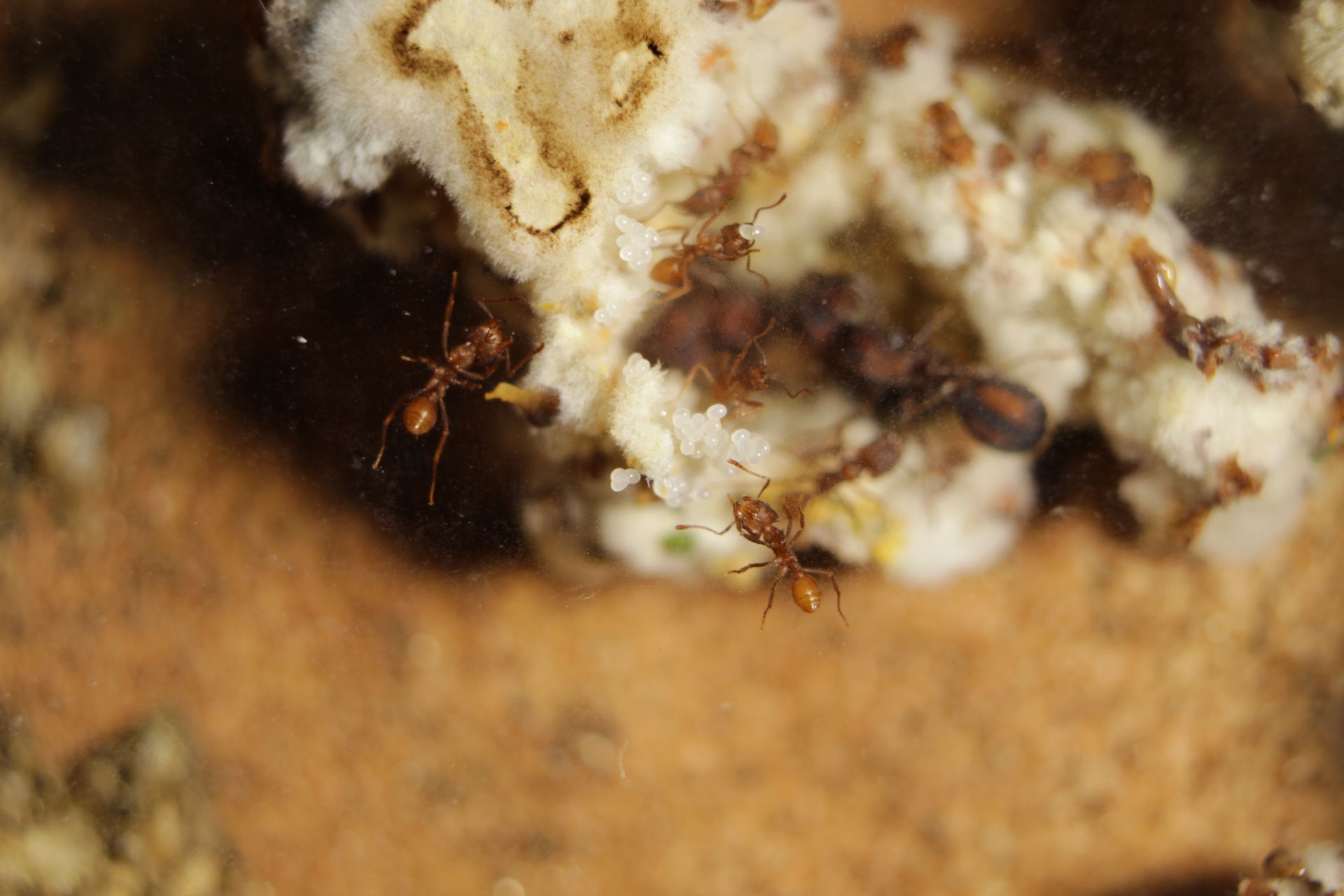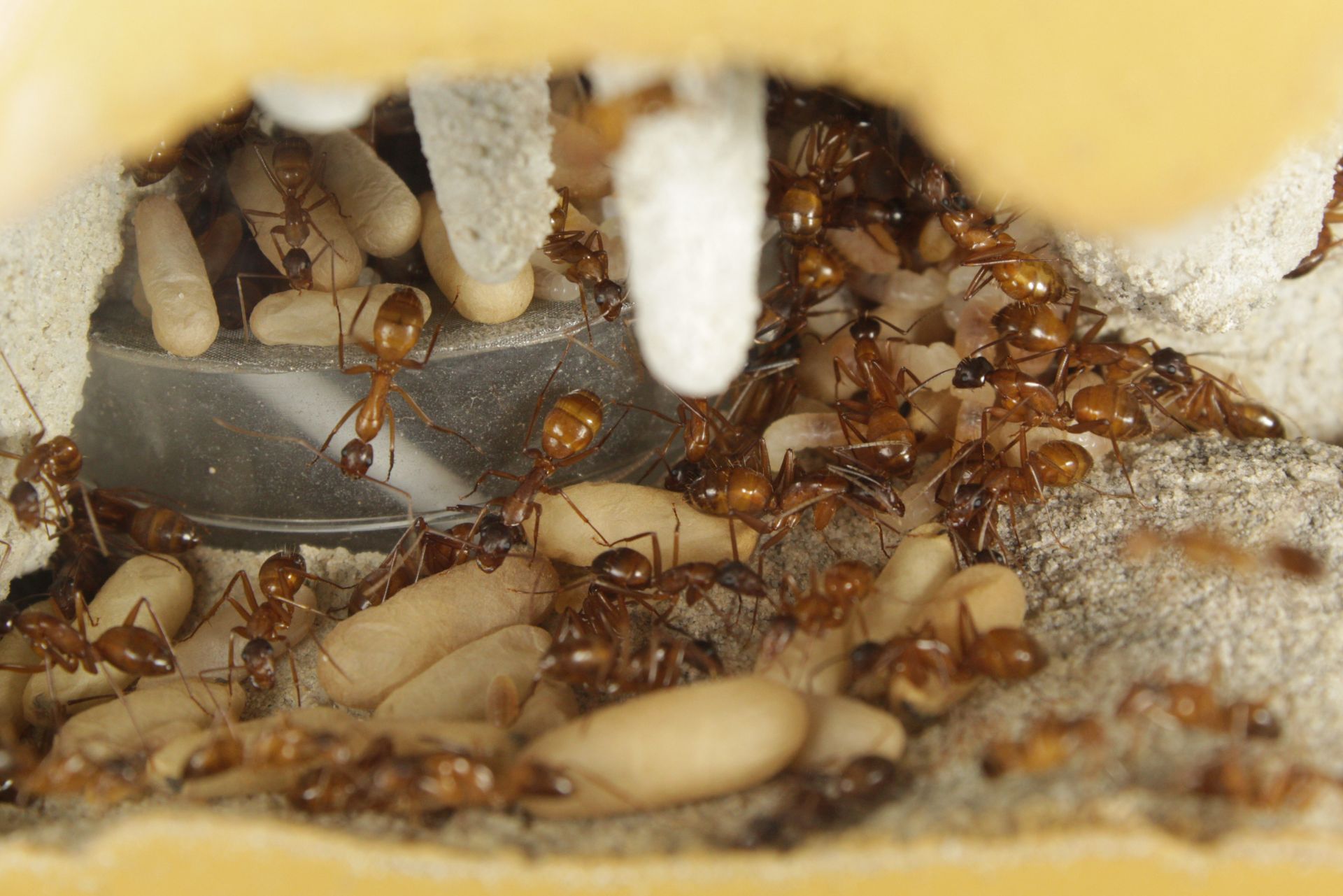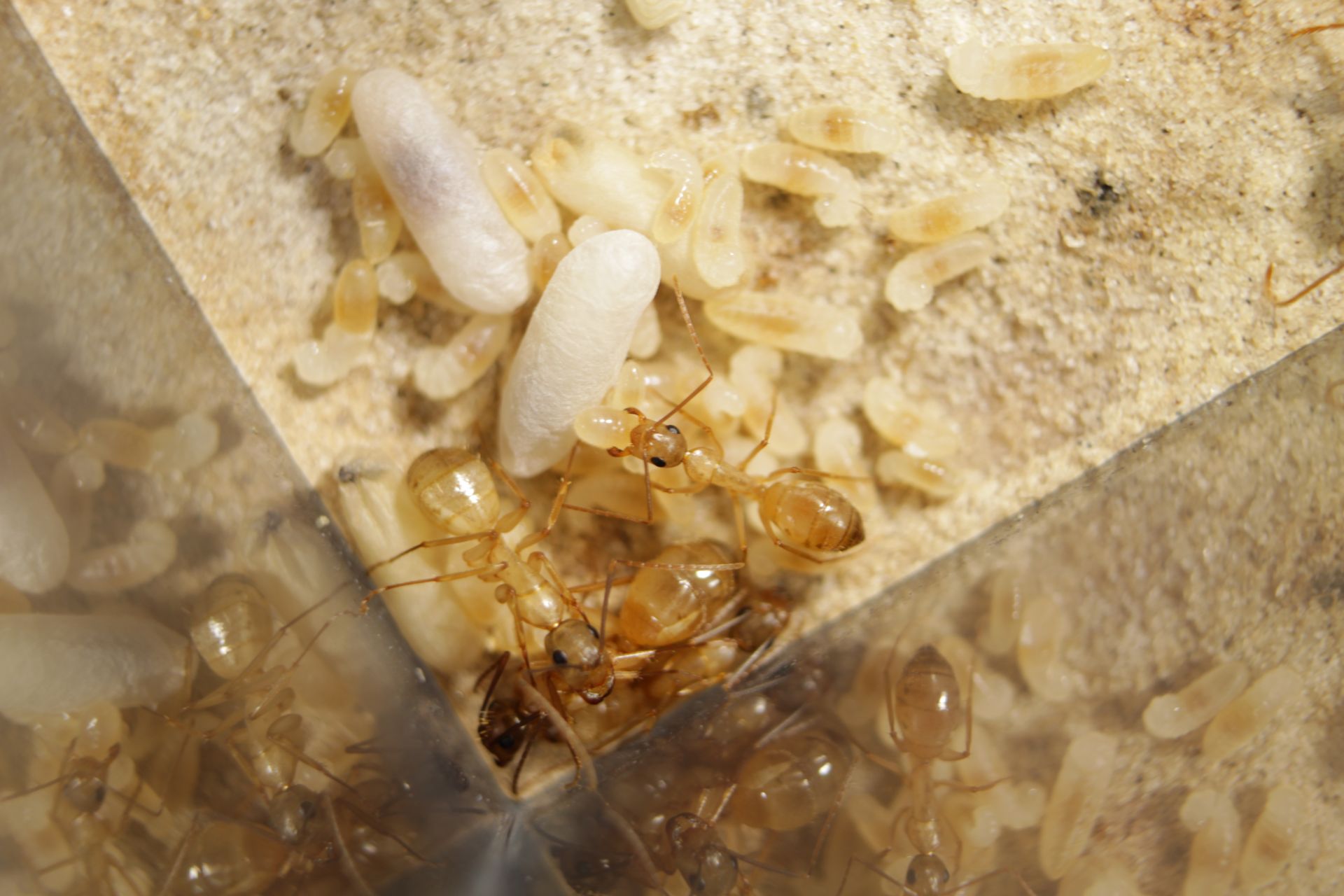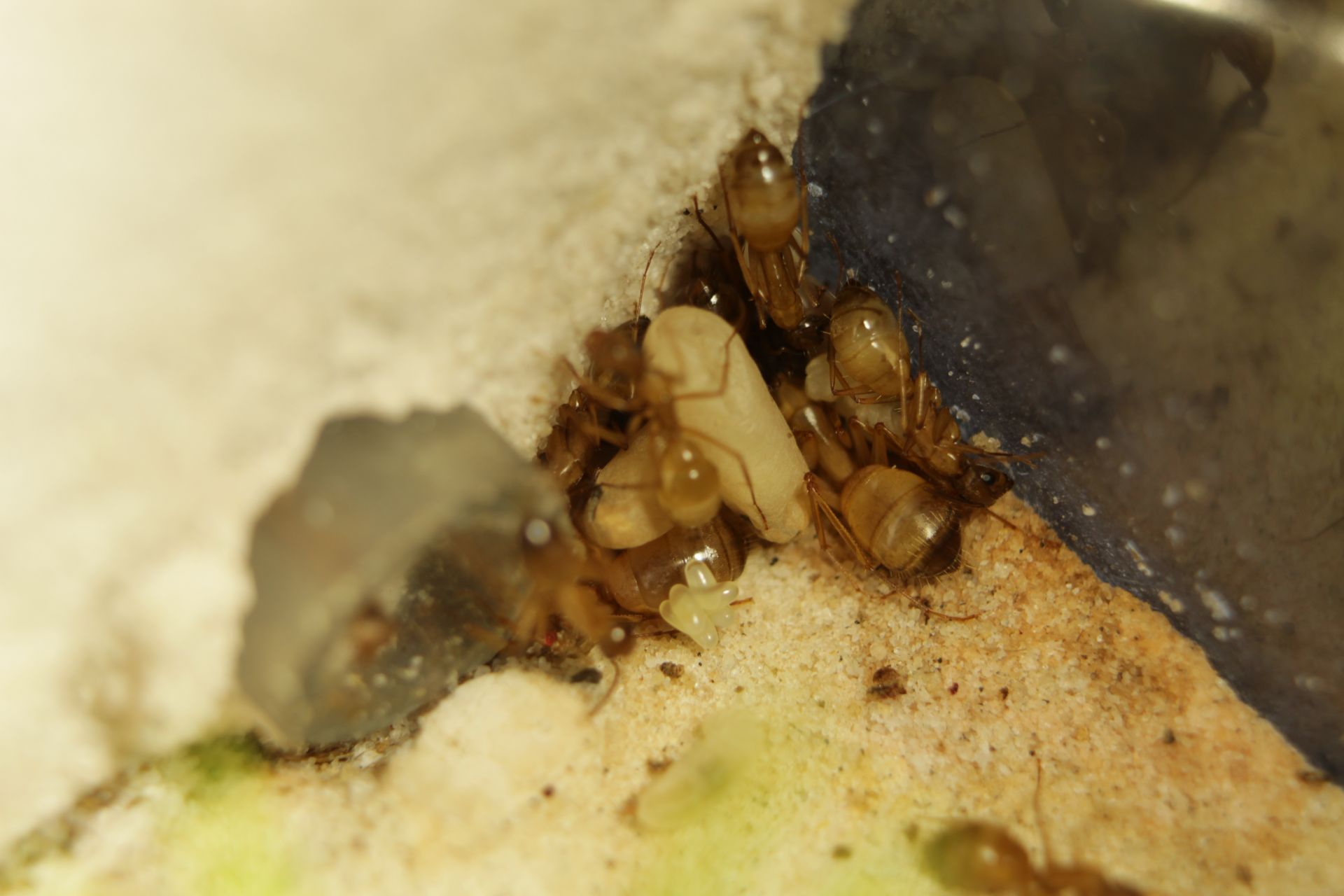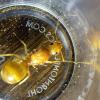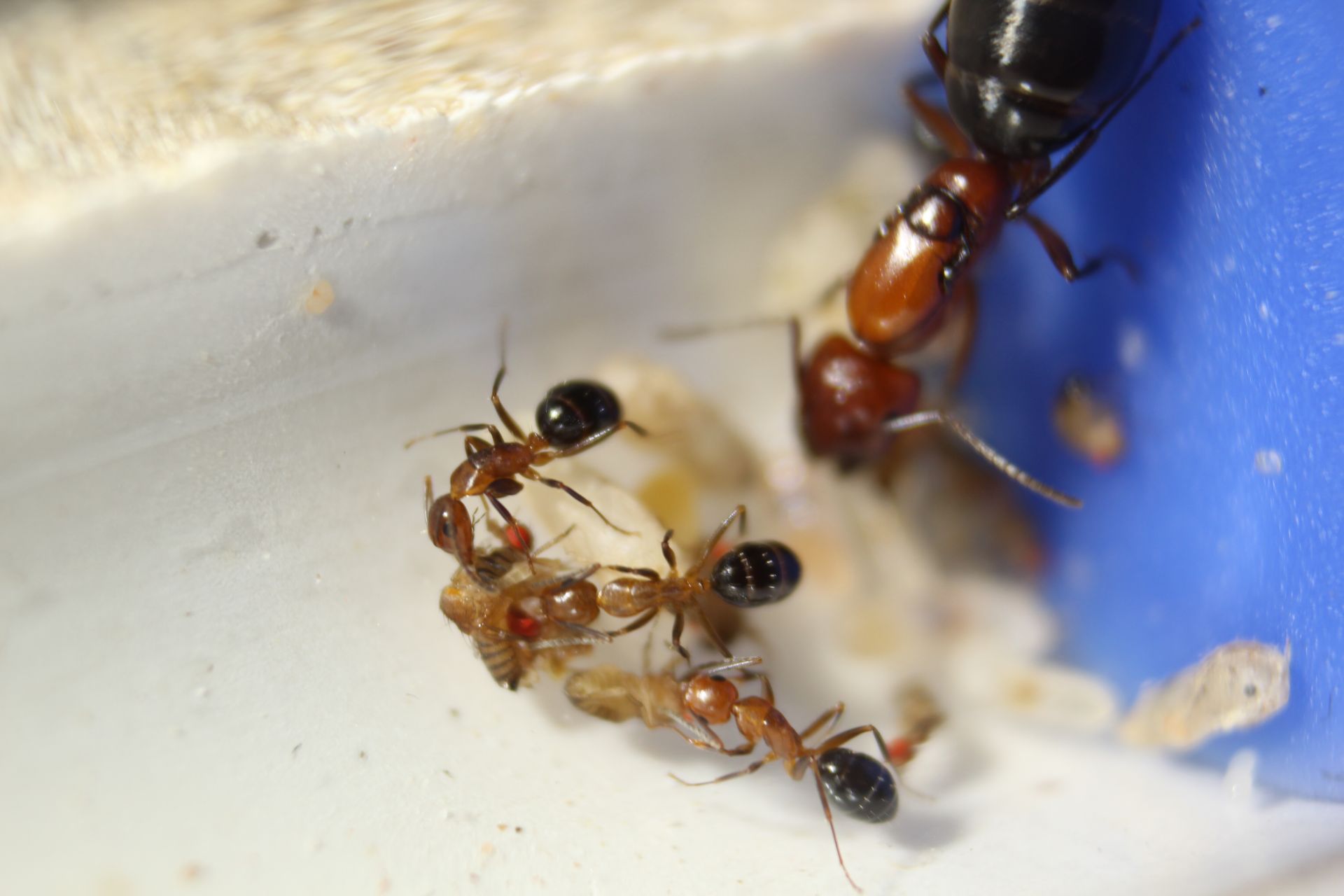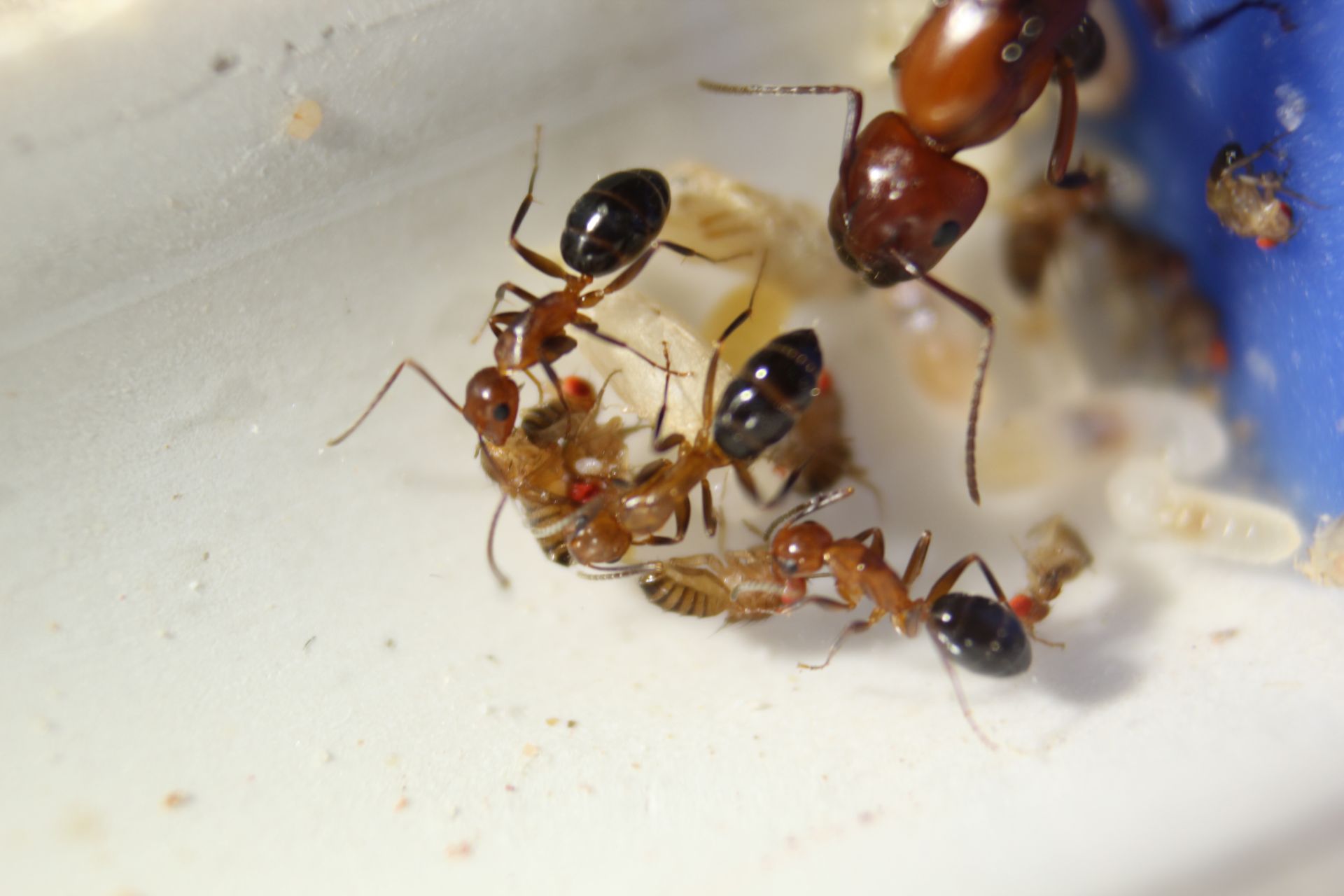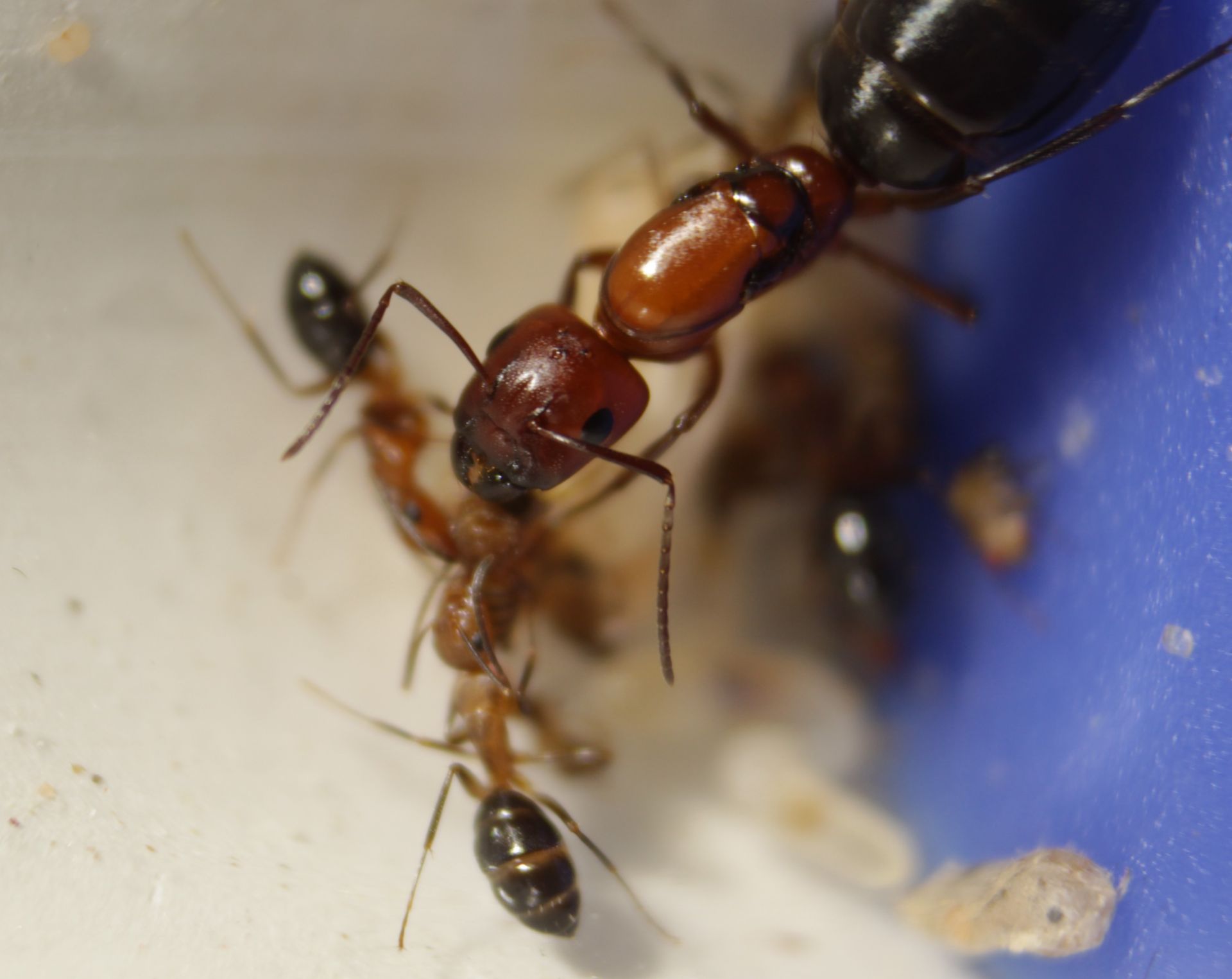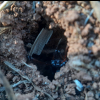(5/18/2021) Acromyrmex Versicolor
Its been a while, but my Acromyrmex colony has really picked it up. A few weeks ago, the smaller colony's fungus died off and all that remained was the queen and one worker. I decided to combine that queen and one remaining worker with my other colony and hope for the best, as the fungus from my larger colony wasn't really accessible at the time for a boost. For the first two days, there was on and off struggle between the original colony's workers and the newly introduced queen, but a few weeks later and they are all getting along fine. Both of the queens like to hang out on one of the larger fungus chunks  .
.
Here's a pic from a few days ago of their egg pile, in the background you can see one clearly visible queen, and a blur of the other. Some of these eggs are now medium sized larvae.
Camponotus us-ca02
Haven't shown this colony here yet, but I bought a handful of these queens back in 2019, and this is the colony that I held onto. They are a little over two years old now, and have over 100 workers, with one large major (not pictured) and a handful of medians. I've been trying to get good shots of the major, but none of them come out great. I'll keep trying. This year I pulled them out of hibernation in February, but they didn't lay eggs for three weeks afterwards. Because of this I put them back into my unheated garage (that averaged in the 50's to low 60's at the time) for another few weeks, which kickstarted egg laying.
This colony primarily feeds on fruit flies and sunburst nectar. They have a strong appetite. Interestingly, I've never seen the major leave the nest. Maybe the inner diameter of the tubing is too small for head, but if I remember correctly, the queen was able to fit down there when I first gave them their current nest (Tar heel ants Hearth)
Camponotus sansabeanus
This colony is doing great as always. I recently positioned their nest so the outworld of their Fortress touches the heating cable I have running through the cabinet they are in, and they moved a bunch of brood out. Its nice to get a top-down view of these guys, really makes the size of the majors stand out. So far, I haven't noticed any major pupae from their first batch of eggs for the year, but hopefully they will produce more as the season progresses. I estimate they have around 75-100 workers total.
That's it for this update! Here's a list of some of the other species I keep that haven't been featured here yet, let me know if you guys would like to see any of them in the future.
In no particular order:
Pogonomyrmex rugosus
Novomessor cockerelli
Myrmecocystus mexicanus
Myrmecocystus mimicus
Camponotus maccooki
Camponotus cf. semitestaceus (desert variety)
Camponotus vicinus
Camponotus laeviissimus
Camponotus sayi
Camponotus hyatti
Camponotus maritimus
Camponotus clarithorax
Camponotus modoc
Veromessor andrei




